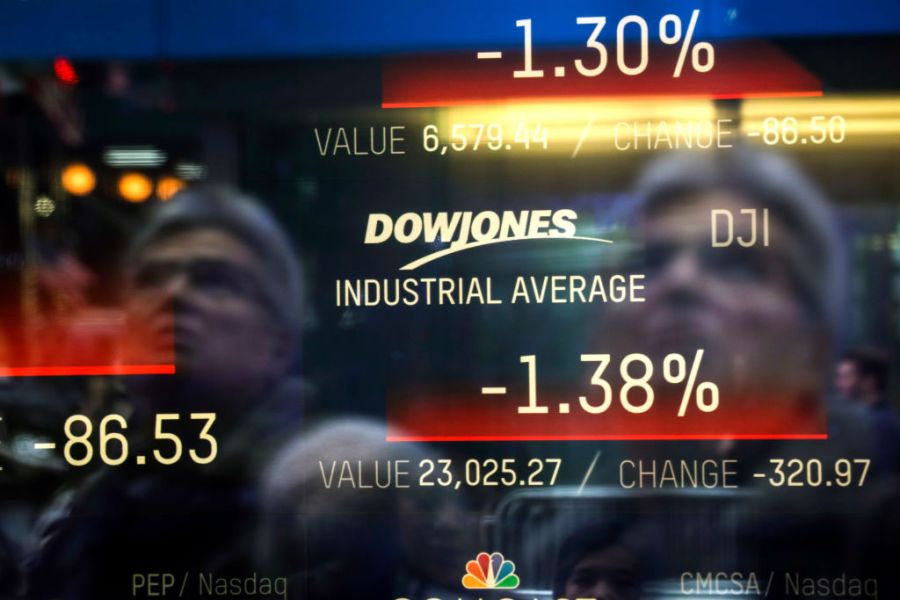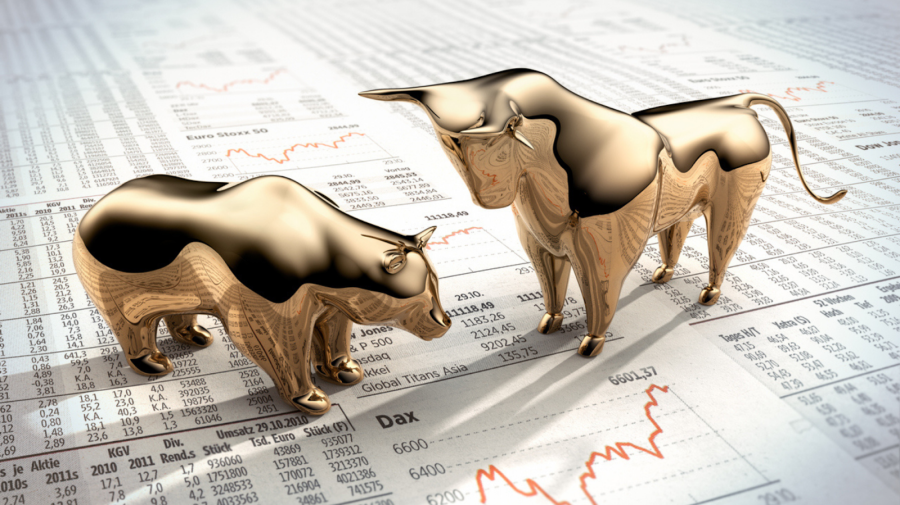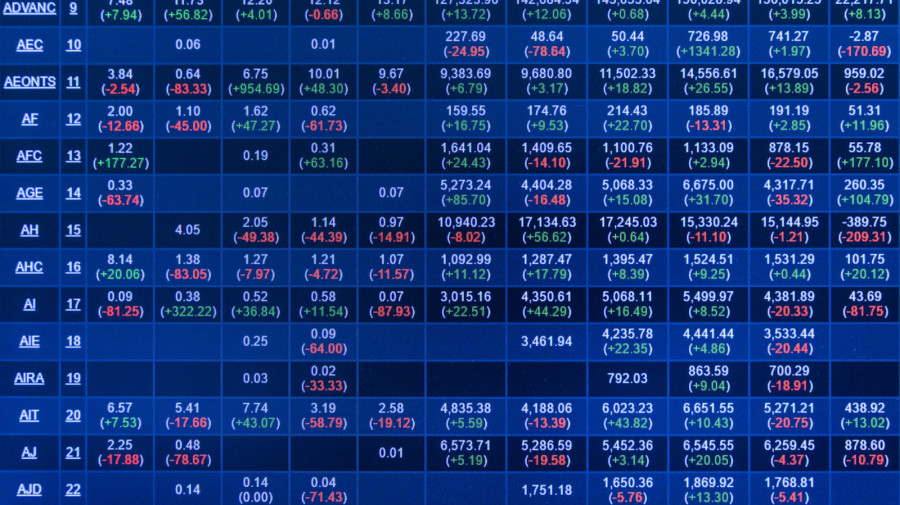
The Dow Jones Industrial Average (DJIA), also known as the Dow Jones Index or simply the Dow, is a major stock market index followed by investors worldwide. But what exactly is the Dow Jones Index, and how does it work? Join us for a crash course on the DJIA, why it’s so important, and the best ways for investors to profit from its price movement.
What Is the Dow Jones Index?

The DJIA is a stock market index that follows the performance of 30 leading blue-chip stocks on the U.S. stock market. Each of the 30 companies represented is a very large, well-regarded leader in its industry, and changes to the DOW are not made lightly.
On rare occasions, companies are sometimes added or removed from the DOW, usually in batches. But the number of companies represented is always 30.
The Dow is one of the three most popular indexes in the U.S. market, along with the Nasdaq Composite and the S&P 500. The idea behind the Dow Jones Index is to provide an indicator or barometer of the overall movement of the stock market at large.
When the Dow is up, the rest of the market will likely be as well. However, when the Dow is down, it may mean that the overall U.S. market is in for some bearing movement.
Who Created the Dow Jones?

The Dow Jones Index is the oldest in American history and traces its roots back to the 1800s. So, who was Dow Jones, and was he a real person? The name actually refers to two different historical figures, journalist Charles H. Dow and his business associate Edward Jones. The two founded the Dow Jones & Company, which began publishing financial reports that ultimately evolved into the Wall Street Journal.
The DJIA was first published on May 26, 1896, and included just 12 companies, most of them in the industrial sector. The index evolved over time and included 30 different companies by 1928, a number that it’s stuck to tracking ever since.
While it can still technically be called the Dow Jones Industrial Average, the “industrial” part is a leftover historical element of the index’s history. Today the Dow includes companies from a wide range of market sectors, except transportation and utilities, which have their own indexes.
How Does the Dow Jones Index Work?

Back in the Dow’s early days, its average was calculated by adding up the current prices of the 12 companies that were included in the index at the time and then dividing them by 12. Over time, however, the DJIA became a price-weighted index, which means its higher-priced companies affect its overall value more than its lower-priced ones.
These days, to arrive at the Dow Jones Index Average, you’d add together the prices of each of the 30 stocks in the index and then divide them by what’s come to be known as the Dow Divisor. The Dow Divisor isn’t quite as straightforward as you might assume because it’s constantly being adjusted to account for things like stock splits and dividend payments among the index’s companies.
The math behind how the current Dow Divisor is calculated can get a bit complicated. Still, the important thing to understand is any adjustments made are meant to ensure that the DJIA remains as pure a reflection of price fluctuation alone as possible.
What Are Some Companies Listed on Dow Jones?

As mentioned, the Dow consists of some of the best-performing companies in the United States. Most of them are either household names or companies behind brands that are. Here’s a current list of the companies that currently make up the Dow Jones Index:
- 3M (MMM)
- American Express (AXP)
- Amgen (AMGN)
- Apple Inc. (AAPL)
- Boeing (BA)
- Caterpillar (CAT)
- Chevron (CVX)
- Cisco Systems (CSCO)
- The Coca-Cola Company (KO)
- Dow Inc. (DOW)
- Goldman Sachs (GS)
- The Home Depot (HD)
- Honeywell (HON)
- IBM (IBM)
- Intel (INTC)
- Johnson & Johnson (JNJ)
- JPMorgan Chase (JPM)
- McDonald’s (MCD)
- Merck & Co. (MRK)
- Microsoft (MSFT)
- NIKE (NKE)
- Procter & Gamble (PG)
- Salesforce (CRM)
- The Travelers Companies (TRV)
- UnitedHealth Group (UNH)
- Verizon (VZ)
- Visa (V)
- Walmart (WMT)
- Walgreens Boots Alliance (WBA)
- The Walt Disney Company (DIS)
How to Buy the Dow Jones Index

If you want to get in on the Dow’s price action, there are several ways to go about it. The first is to actually purchase shares in each of the companies listed if you have the money to do it. The cheaper and easier way is to invest in (electronic trading funds) ETFs that track the Dow’s movement. Here are some of the best:
- SPDR Dow Jones Industrial Average ETF (DIA)
The DIA is the purest Dow ETF you can invest in and will deliver virtually identical yields as investing in each of the Dow’s companies separately but for a fraction of the cost.
- Invesco Dow Jones Industrial Average Dividend ETF (DJD)
The DJD is similar to DIA in that it too tracks the Dow. But instead of weighing the companies based on price, it weights them based on their dividend yields.
- ProShares Short Dow 30 ETF (DOG)
Think the Dow is in for a crash? Inverse ETFs like DOG allow you to bet against the Dow by rising in price as much as the Dow falls.
- ProShares Ultra Dow30 (DDM)
DDM is recommended for experienced traders only, as it’s what’s known as a leveraged ETF and is not designed for long-term holding. DDM offers returns that equal the Dow’s daily performance x3. In other words, if you think the Dow is about to have a really awesome day, then you can buy into DDM and reap triple the price benefits if you’re correct. The downside is that if you’re wrong, you’ll lose triple the money as well. While leveraged ETFs can be profitable for experienced traders, they also come with a much higher degree of risk.
We hope this information has helped answer your questions about the Dow Jones Index, why it’s so important, and the best ways to benefit from its price movement!





